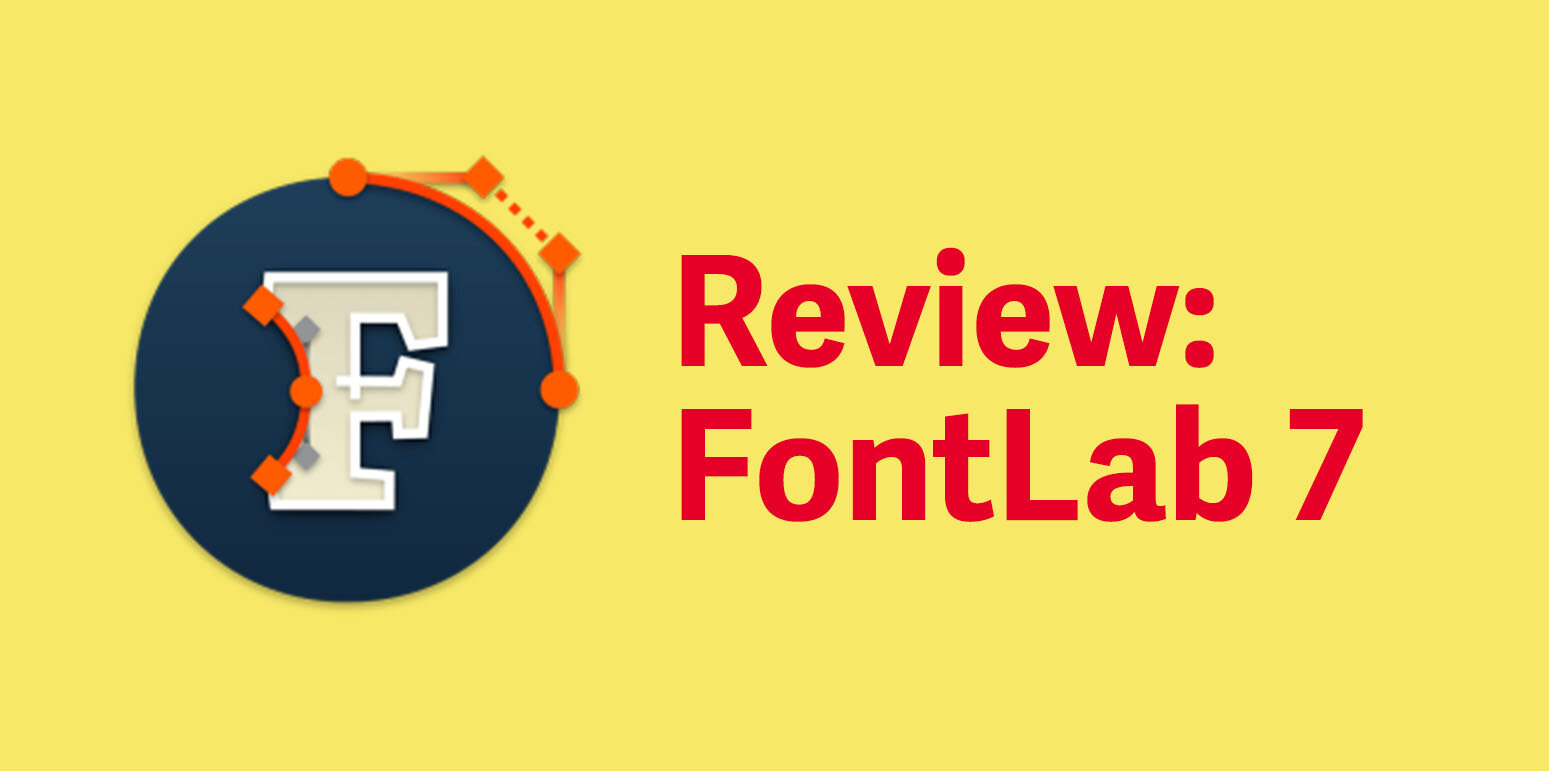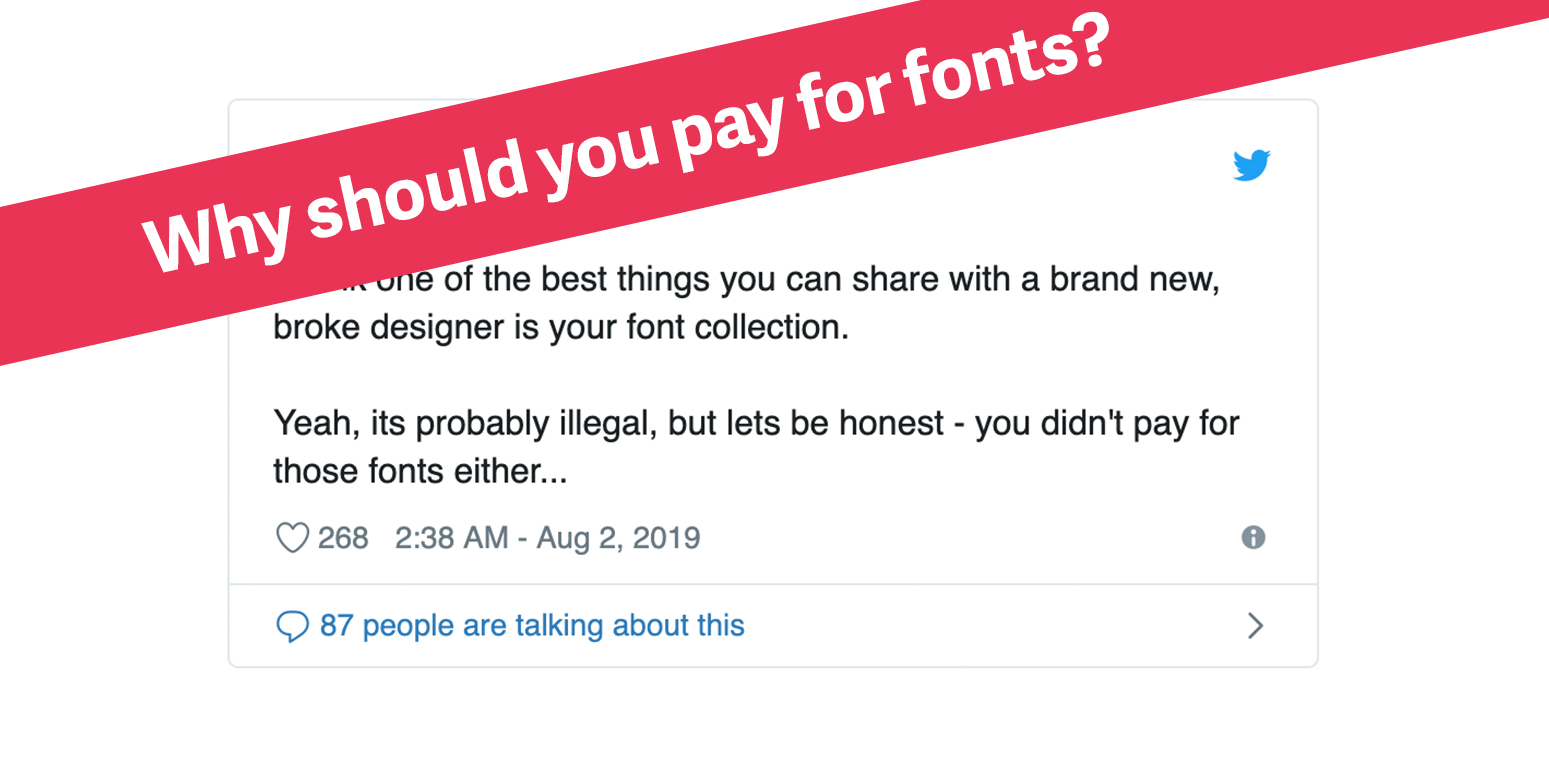15 Things I Learned from Joyce Ketterer about EULAs
In July of 2019, Joyce Ketterer answered a question every day about End User Licensing Agreements (EULA). Ketterer isn’t a lawyer, instead, she is the CEO of Darden Studio and has dedicated a large part of her life to understanding and working with EULAs. After reading through her #FontLicensingJuly series and watching her ATypeI videos (read more) here are 15 key takeaways.
1. You aren’t selling the font, you are selling a licensing agreement.
2. Most licensing disagreements are settled quietly and amicably.
Most people do not realize they are breaking the EULA, and are not doing it maliciously. The cases that are publicized are the contentious large violations e.g., NBC vs Font Bureau.
3. Fonts are unique from other software
Operating systems treat them as plugins, designers can’t prevent people from making unlimited copies. There is also no way to automatically push updates, require EULA consent form, or serial number entry. Therefore font EULAs matter more than other software products.
4. There 3 Easy steps to make sure you do not violate a font’s EULA:
Read the EULA
Quickly installing the fonts is not a solution, make sure you manage your fonts properly, it will help with compliance in the long run.
Write a style guide. Style guides inform the appropriate usages for fonts.
5. Web traffic license should be based on the yearly traffic.
This helps simplify issues associate with moths of low traffic. It also allows you to reconcile traffic once a year.
6. There are unknowns in EULAs
While some fonts refuse usage for certain usages (Hoeffler and Co: Prohibited for “controlling aircraft or other modes of human mass transportation, nuclear or chemical facilities, life support systems, implantable medical equipment, motor vehicles, weaponry systems, or any similar scenario”). It is now known if there this enforceable unless it is challenged in a court of law. Instead, it may be better to say you can’t guarantee that the font will work in certain situations.
7. Why are licenses structure in perpetuity vs by usage
Basic font license are in perpetuity, requiring anyone time payment, whereas web and app are based on users or views because these can be more easily measured and change over time, allowing for a more fair pricing structure.
8. “Pricing self-hosted web fonts by page views is tricky.
“Pricing self-hosted web fonts by pageviews is tricky. If a tracker was ok hosting would be ok. We accept good-faith self-reporting. If the [numbers] seems odd we may ask for reports or to speak with IT to make sure we agree about how to count.”—Joyce Ketterer
9. Don’t transfer licenses
Instead of designers transferring licenses to clients, which can be complicated and create issues, it is better to offer referrals and bulk discounts to designers and clients.
10. License fonts to the Brand
When licensing fonts don’t license it to the client, developer, or any one person. Instead, license it to the brand. Brand licensing makes it easier to identify the EULA, and also prevents issues if a company changes developers or designers.
11. Font subscripts services has their pros and cons
Font subscription services are great for end-users who get to browse a large variety of fonts. The downside is that foundries can remove fonts preventing end-users from accessing the fonts.
12. Fonts aren’t expensive
People ask why fonts are so expensive. They aren’t. Fonts are taken for granted. Fonts are expensive pieces of software to develop that require a long time to recoup their costs.
13. Updating a foundries EULA can create compliance problems.
It can be difficult to understand which agreement a font falls under. Instead, use a clause state that the EULA can be updated if there are new or unforeseen technologies.
14. Font licensing models change over time.
The basic font license may change in the future from desktop licenses to cloud-based licenses.
15. Modification clauses can be a touchy subject.
Many designers see protection against modification as protecting their intellectual property. It can also help prevent issues with cache conflicts.
16. Bonus!
EULAs seem like an intimidating topic, but with a little bit of reading, they are pretty straightforward and important to typeface design.










The typographer John Hudson puts it best variable fonts are “a single font file that behaves like multiple fonts”